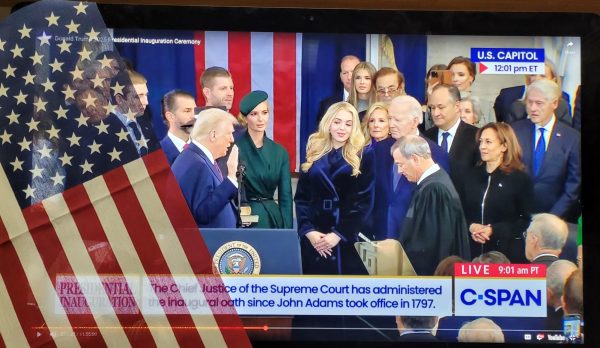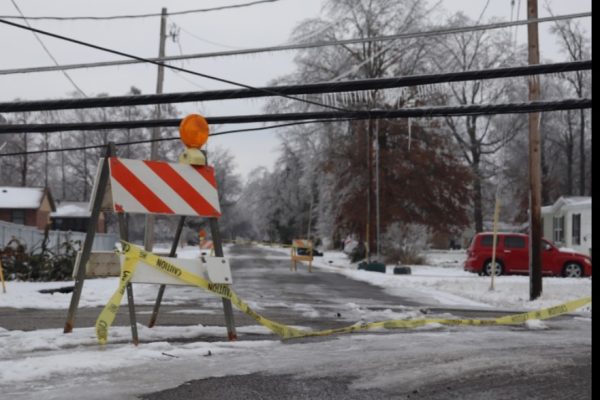So, the Election’s Over… What Now?
The Results of the 2018 Midterm Elections and What They Mean for America
Photography, DJ McInturff
Turn out for this years’ midterm elections was exceptionally high, with 47% of eligible Americans casting a ballot.
The signs have finally been taken down, the ads have stopped running, and the ballots have been counted. The 2018 midterm elections are officially over, but the politics produced by this year’s vote are just getting started.
In regards to the U.S. House of Representatives, the home of some of the most contested seats on the ballot, it was the Democrats who won control of this highly influential legislative body, which had been under Republican control prior to Tuesday, November 6. In fact, as of November 10, Democrats had gained a net total of 32 seats, that is nine more than the 23 seats that were necessary to bring an end to one-party rule in Washington.
Meanwhile, Republicans maintained control of the U.S. Senate, with 51 seats compared to the Democrats’ 47. However, in both bodies of Congress the results in several contested seats remains to be clear; but, no results can change the fact that for at least the next two years the Democratic party will hold a safe majority in the House, while the Republicans will maintain a majority in the Senate.
So, on the national level, it would seem as if the so-called “Blue Wave” swept across the country, not only managing to latch onto control of the House but also claiming many important governorships and statewide offices, including right here in Illinois. However, the narrative played out differently in Southern Illinois, with only one Williamson county Democratic candidate, Sheriff Bennie Vick, winning his race. Other than in that one instance, Republicans won every other contested seat of power by often astounding margins. So was it the “Red Wave” that prevailed after all? Or, more accurately, was it a mixture of both?
“I think a lot of Democratic voters turned out,” says a first-time, more liberal voter himself, senior Ryan Jurich, “but so did a lot of Republican voters. I think both sides underestimated the other.” Jurich points out that, with exception to a few close races, the congressional results were expected, “but I did think Democrats might do better in some of the state elections here. It’s mostly just same old, same old.” Although, “the Democrats did make some major wins,” he adds, “even in places where Republicans did win, it was very close, like with [Beto] O’Rourke.”
“I wouldn’t say that it really excites me,” Jurich concludes in regards to the results of these elections, “with a divided Congress it’s going to be hard to get things done, especially with the executive branch. But I am glad that the Republicans can’t just do whatever they want.” In the end, Jurich infers that “both sides kind of won and lost.”
“I assumed that it would go both directions,” states Morgan McKinnies, a conservative senior at HHS. Even though she anticipated similar results, “right now, it’s a scandal” says McKinnies in reference to the outcomes in several elections, “votes are miraculously appearing after many people were called out about it.” Here, McKinnies is in particular referencing the race for governor in Georgia, where Democratic candidate Stacey Abrams and Republican Brian Kemp are posed to find themselves head to head in a runoff after claims of voter fraud and voter suppression have been leveled by either party; and there is a very similar situation playing out in a tight senatorial race in Florida.
Overall, however, McKinnies admits that “the Blue picked up some really prominent seats.” While on the local level, she acknowledges the growing trend of Republican victories. “I think many areas in southern Illinois are turning Republican because of their beliefs and movements in the economy.”
This shift in power is playing out differently across the country, with Republican voters turning out in stronger numbers within more rural areas, while Democrats not only remain the majority in more urban areas, but are beginning to extend their reach into the suburbs, turing these sometimes traditionally more conservative neighborhoods into Democratic safe havens. “I wouldn’t blame it all on the party split,” explains McKinnies in response to this growing divide between rural and urban America, “but I would say it’s because of the background of people in this area… that we allow the parties to divide us.”
In response to the shockingly close margins in many races across the country, Mckinnies infers that “a lot of people were undecided until they got to the polls that day. But also I think that a lot of people didn’t show up who said they were going to.” Furthermore, Mckinnies expresses the opinion that President Trump’s appearance in a number of competitive districts, including right here in the Illinois 12th congressional district, succeeded in turning the tide in the Republicans’ favor, in some cases.
But, in the end, McKinnies, like most Americans, is hoping that her elected officials can meet each other on the common ground of shared interests. “I’m hoping for bipartisanship.”
With this round of elections over, only a few tight races left to call, and a vast sea of results and data to mull over, it is inevitable that the question will be raised– what, if anything, might the midterms foreshadow about the 2020 presidential election?
Since two years of Donald Trump’s presidency have produced an impressive slate of Democratic wins, Jurich, who is hesitant to make any concrete prediction, simply points back to this fact as a possible precursor. “What will two more years of a Trump presidency do?”
McKinnies seems to concur with Jurich’s vague predictions in concerns to any victories in 2020– “I think that depends on the candidate of either party.”
One undebatable fact about these elections is that the 2018 midterms saw record breaking voter turnout, with over 47% of eligible American adults casting a ballot. That’s the highest turnout for a midterm election recorded since 1966! This means that many more Americans than in recent years are not only noticing and taking an interest in the politics unfolding around them, but that they are actually taking action in order to either express their approval, or disapproval, of what they’ve come to find.
Although (most of) the ballots might have been counted, victories declared, and concession speeches made, many questions have still been left unanswered regarding not only the current state of American politics, but also the future; and the American people are probably going to continue on living in this societal fog for at least the next two years. But one thing is for certain, those same American people who seemed complacent not so long ago, are now motivated. They are now finding their voice, and they’re finding it at the ballot box. In 2020, the stakes will be even higher.









